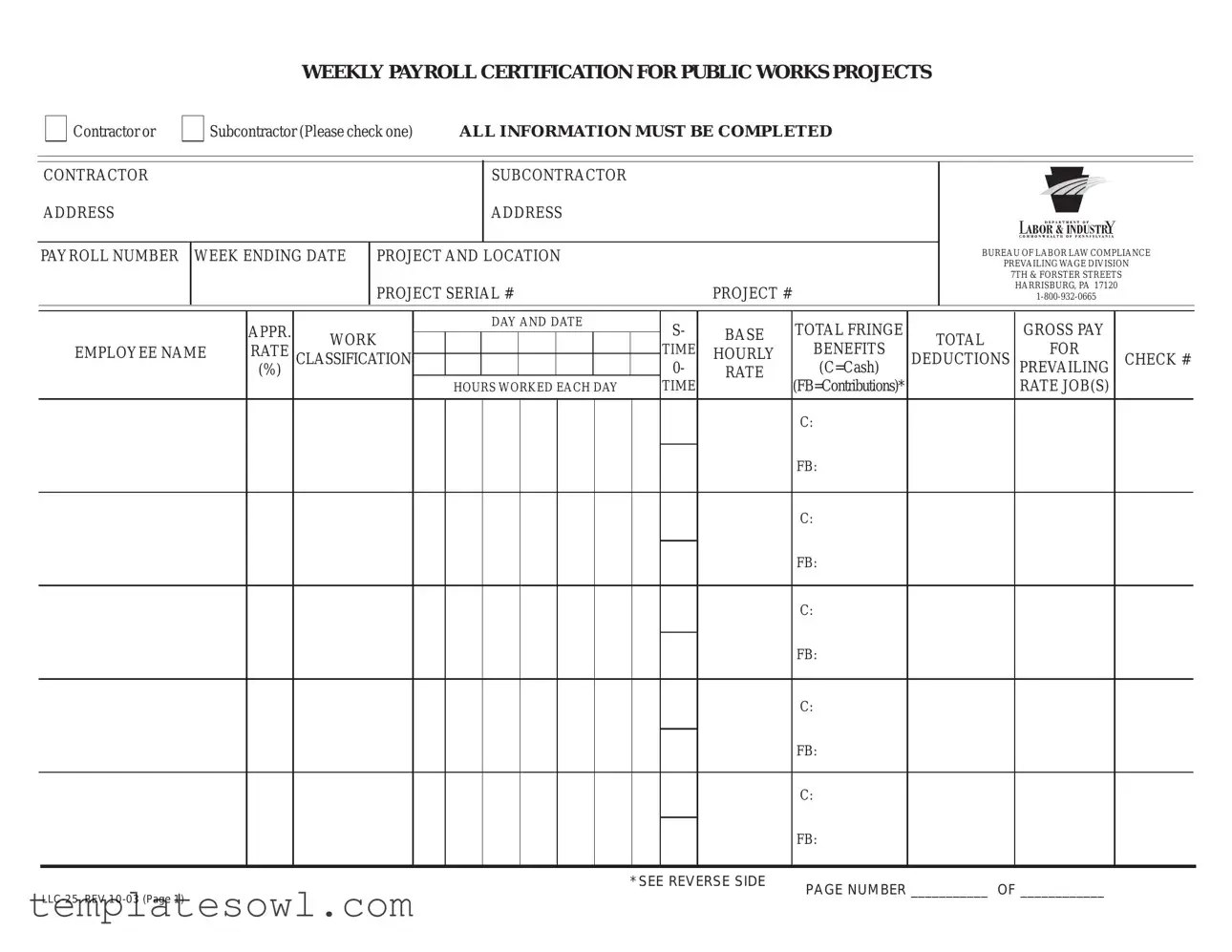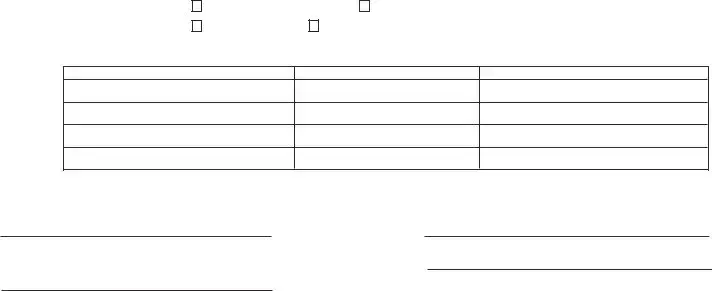What is the purpose of the PA Payroll form?
The PA Payroll form serves as a certification for employees who work on public works projects in Pennsylvania. It ensures that contractors and subcontractors comply with the state's prevailing wage laws. By submitting this form, employers verify that workers are compensated in accordance with established wage rates, thereby promoting fair labor practices.
Who needs to complete the PA Payroll form?
Both contractors and subcontractors involved in public works projects must complete the PA Payroll form. This requirement applies to any entity that oversees labor in the construction context. By ensuring the form is accurately filled out, these parties can confirm compliance with state regulations, which helps maintain a fair workplace.
What specific information is required on the form?
The form requires detailed information such as the name and address of the contractor or subcontractor, payroll number, project and location, employee names, classifications, hours worked, pay rates, deductions, and fringe benefits. Each section serves to document how labor is compensated and the nature of the work performed.
What are fringe benefits and how should they be reported?
Fringe benefits refer to extras provided to employees alongside their wages, such as health insurance, retirement contributions, and paid time off. The PA Payroll form asks employers to specify each type of benefit and the amount contributed per hour. This transparency ensures workers receive full compensation for their labor, in compliance with state law.
When should the PA Payroll form be submitted?
The PA Payroll form should be submitted weekly throughout the project duration. On the first and last submissions, a notarized certification must also be included. Timely submissions help ensure ongoing compliance with state laws and provide accurate records for review by regulatory agencies.
What does the certification statement entail?
The certification statement is a commitment by the contractor or subcontractor attesting to various conditions, including adherence to prevailing wage requirements and disclosure of any debarment status. This part of the form emphasizes accountability and legal compliance, helping protect both workers and employers.
What are the consequences of submitting false information?
Falsifying any information on the PA Payroll form can lead to serious repercussions, including civil or criminal prosecution. This serves as a reminder for contractors and subcontractors to provide accurate and truthful information. Upholding integrity in reporting not only supports compliance but also fosters trust within the labor community.
How should the form be notarized?
Notarization must be completed on the first and last submissions of the PA Payroll form. This process involves a certified notary public verifying the identity of the signer and witnessing the signing of the form. The presence of a notary adds a layer of authenticity, ensuring that the submitted information is credible and official.
Where can I find assistance if I have questions about the form?
If you have questions about the PA Payroll form, you can contact the Bureau of Labor Law Compliance’s Prevailing Wage Division. They provide resources and assistance to help contractors and subcontractors navigate the requirements of the form. Their guidance is invaluable for ensuring proper completion and compliance with state regulations.


